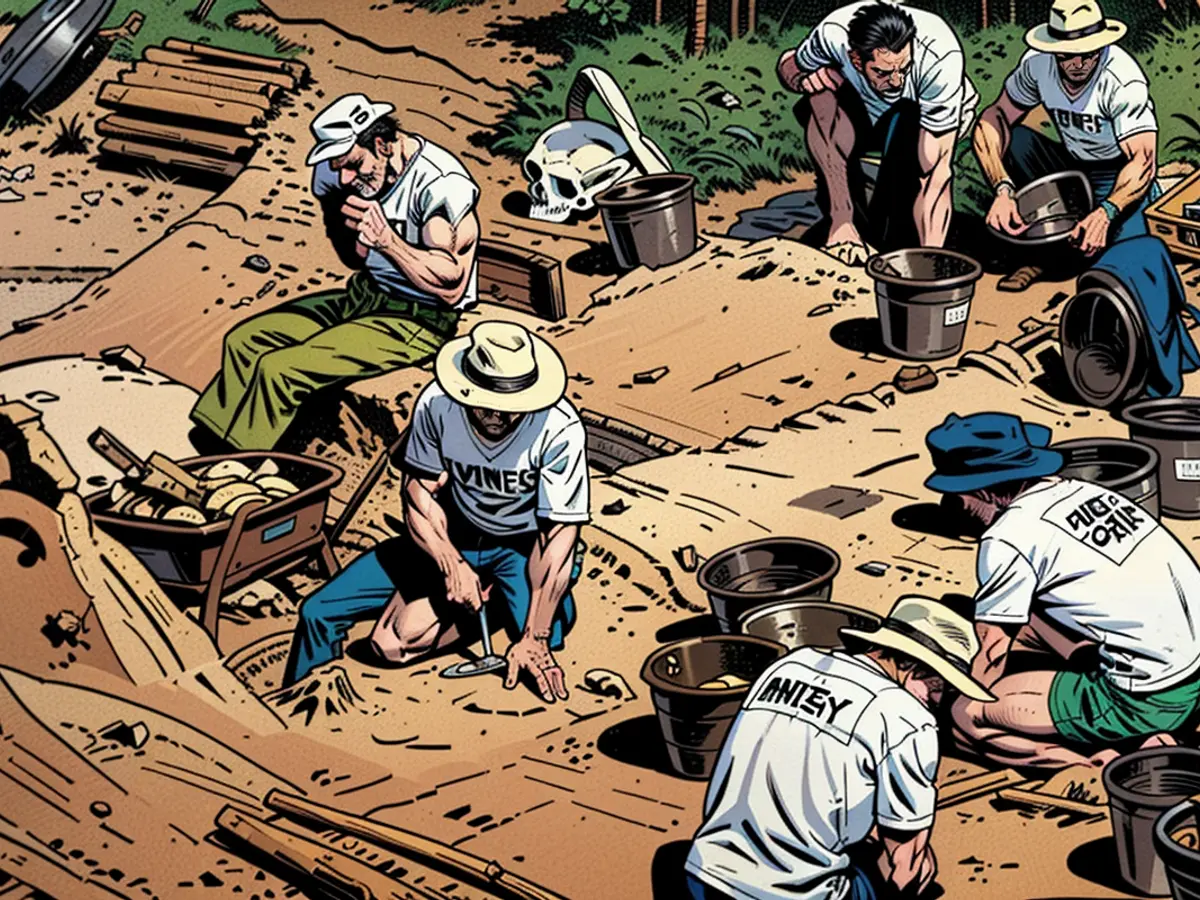- Discovered New Wealth: Over 350 Ancient Relics Unveiled at Bromacker
At this year's excavation at the fossil site of Bromacker in Thuringian Forest, over 350 discoveries were made once again. These include dinosaur bones, tiny skeletons, fossil traces, ancient crustaceans, plant imprints, and insect wings. As Jörg Fröbisch, the project and excavation leader, put it, "This year's excavation at Bromacker was another fantastic success and surpassed our expectations."
Hopefully, the analysis of these discovers will provide more information about the entire ecosystem at Bromacker 290 million years ago. Around 50 researchers took part in this year's excavation in July and August. Among their discoveries this year was a small piece of a skull - a jaw with long, thin, sharp teeth. The specific identification of this find is still under review. Among the particularly small fossil finds were also bivalve crabs (conchostracans) and roots of plants.
Unique insights into the Perm age
Bromacker (Gotha district) is considered one of the most significant fossil sites in Germany. An international research team, which includes paleontologists, geologists, and geoscientific specialists, digs at Bromacker for four weeks each year to uncover new finds from ancient times. The fossils date back to the Perm era, around 290 million years ago, before the first dinosaurs appeared.
The exceptionally well-preserved fossils enable us to draw conclusions about the evolution of early land vertebrates, insects, or plants in an ancient ecosystem. This year's fourth summer excavation was attended by over 2300 visitors, who had the opportunity to observe the scientists at work and interact with them.
New species identified
Since 2020, over 350 discoveries have been recorded each year, with most of them being processed and prepared between excavations. Among the previously unearthed dinosaur finds, experts have identified two new species of early terrestrial vertebrates: Bromerpeton subcolossus and Diadectes dreichgleichenensis. The project, which is currently funded until the following summer, is in partnership with the Museum für Naturkunde Berlin, the Friedenstein Foundation Gotha, the Friedrich-Schiller-Universität Jena, and the UNESCO Global Geopark Thuringia Inselsberg - Drei Gleichen. Currently, the project team is developing a strategy to ensure that the excavations and research around Bromacker can be sustained in the long term.
During the analysis of the discoveries, other vegetables like ferns and horsetails might provide further insights into the Perm era diet. Additionally, the fossilized remnants of other vegetables could offer valuable information about the environmental conditions during that period.








